Free DHL shipping for orders over
West African Wisdom: Adinkra Symbols & Meanings

Sankofa - Go Back And Take
Let’s start our exploration with “Sankofa,” the symbol adorning your tote bag. The symbol is a stylized bird with its head turned backwards, holding an egg in its beak. Sankofa means “Go back and take.” As the Akan proverb goes, “Se wo were fi na wosan kofa a yenkyiri.” To wit, it is not taboo to go back and get something after you have forgotten it. More literally, it means if you forget and you go back to get it, there is nothing wrong with it. The Sankofa symbol signifies the importance of learning from the past in order to build a better future. It teaches us that it is never too late to go back and correct our mistakes, or to reclaim what we have lost.
That history has much to teach is not in question but the wisdom of this sentiment is even more pronounced in societies which have nothing more than an oral tradition to transmit their culture and values. Then, not only is history important, but also those who know it. Further, the literary and narrative memorials the elders establish must be preserved lest their discoveries be lost forever.
The arrogance of succeeding generations may lead them to ignore established conventions and traditions because the events and experiences that led to their construction would have faded out of the general consciousness but this is a grave error that must be avoided. Sankofa embodies the spirit and attitude of reverence for the past, reverence for one’s forebears, reverence for one’s history, reverence for one’s elders. The mythical bird effortfully bending its neck to reach back for the abandoned but precious egg signifies the diligence and effort required to pay due reverence to the past and give it its proper place in the current scheme of events. Sankofa is a gentle admonition that if even in our arrogance we overlook the gems from the past, when we come to our senses we should be humble enough to retrace our steps and make amends. As the popular saying goes, those who do not know history are doomed to repeat it. So are those who do not know or respect their roots and history bound to repeat its flaws and mistakes.
With every appeal to show regard for the past comes the objections about its obvious flaws. We need not deify the actors nor conjure up hagiographies for them to learn from them. Neither do we need to sanitize their legacies or purge their sins from memory. We only need to take their histories for what they are–flawed as they were, blind as they were, wrong as they were–for we are likely no better. Our progeny will make similarly damning if not worse assessments of our lives when we are gone. It behooves us to sift the wheat from the chaff and draw the useful lessons.
So, carrying Sankofa with you is like carrying a reminder to always be moving forward, but to also look back and learn from your experiences.
The Two Sankofa symbols

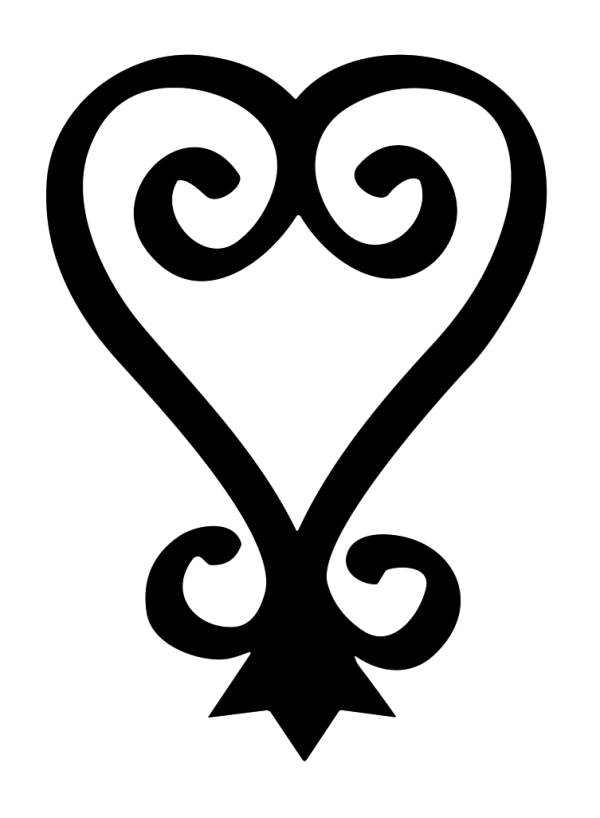
There are two Sankofa symbols. The more popular one is the bird with the contorted neck but the other one which looks more like the conventional symbol for the heart is also used. This figure is symmetrical about a vertical axis with each half spotting two spirals. One at the top and the other at the bottom. The spirals probably represent the idea of going around but ending up at a point–presumably the source. We should not forget our roots for its tendency is to feature inexorably in every aspect of our lives.
Discover the World of Adinkra Symbols
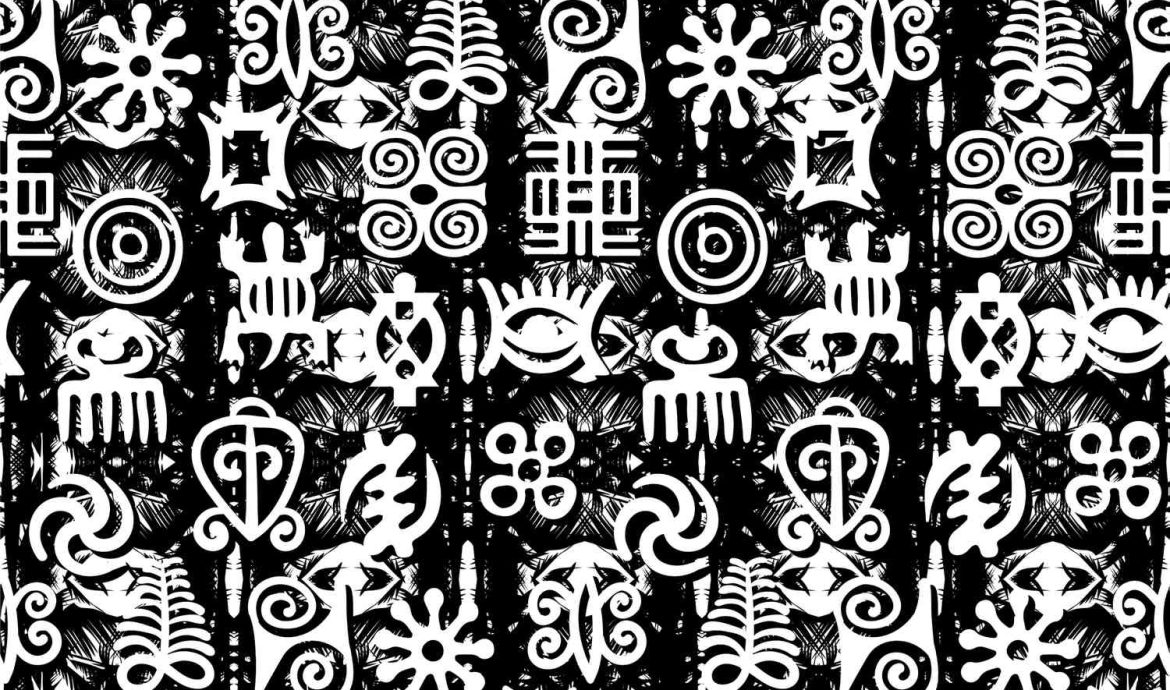
Welcome to a journey of cultural discovery, where we unveil the rich history and profound symbolism of Adinkra, the intricate language of West African design.
A Tradition of Expression
Adinkra is a centuries-old tradition originating from the Ashanti and Akan peoples of West Africa, particularly Ghana. The word “Adinkra” itself means farewell or goodbye in Akan. It is a cotton cloth produced in Ghana and Côte d’Ivoire, stamped with traditional Akan symbols that represent popular proverbs, maxims, historical events, attitudes, behavior, and abstract concepts. Adinkra is one of several traditional cloths produced in the region, alongside kente and adanudo.
Symbolic Meanings and Proverbs
The adinkra symbols are deeply meaningful, often linked with proverbs to convey more than just a single word. These symbols were compiled into a list of 53 by Robert Sutherland Rattray in his book “Religion and Art in Ashanti” in 1927.
A Royal Legacy
Originally produced by the Gyaaman clans of the Brong region, Adinkra was a cloth of exclusivity, reserved for royalty and spiritual leaders, and used solely for significant ceremonies like funerals. Adinkra, meaning “goodbye,” held a sacred place in these rituals.
The Influence of Conflict
The early nineteenth century saw a military conflict that altered the course of Adinkra’s history. The Gyaaman attempted to replicate the neighboring Asante’s golden stool, a symbol of the Asante nation. This conflict resulted in the death of the Gyaaman king, and his adinkra robe was taken as a trophy by Nana Osei Bonsu-Panyin, the Asante Hene (Asante King). Along with the robe came the knowledge of adinkra aduru, the special ink used in the printing process, and the technique of stamping designs onto cotton cloth.
Adinkra's Evolution
Over time, the Asante further developed adinkra symbology, infusing their own philosophies, folk tales, and culture into the designs. Adinkra symbols transcended fabric and found their way onto pottery, metalwork, and modern commercial designs, adding depth and significance to various products, architectural elements, and sculptures.
Adinkra Cloth Today
Adinkra cloth remains an integral part of Ghana’s cultural fabric, used for special occasions such as weddings and initiation rites. Traditional methods of production persist, with the unique ink, adinkra aduru, still prepared by boiling the bark of the Badie tree with iron slag.
Use of Adinkra Symbols
Adinkra symbols have expanded beyond cloth and are now found on various exported items, including furniture, sculpture, pottery, clothing, jewelry and even tattoos. Each symbol carries its own message and meaning, making it important to research their significance before using them for a particular purpose.
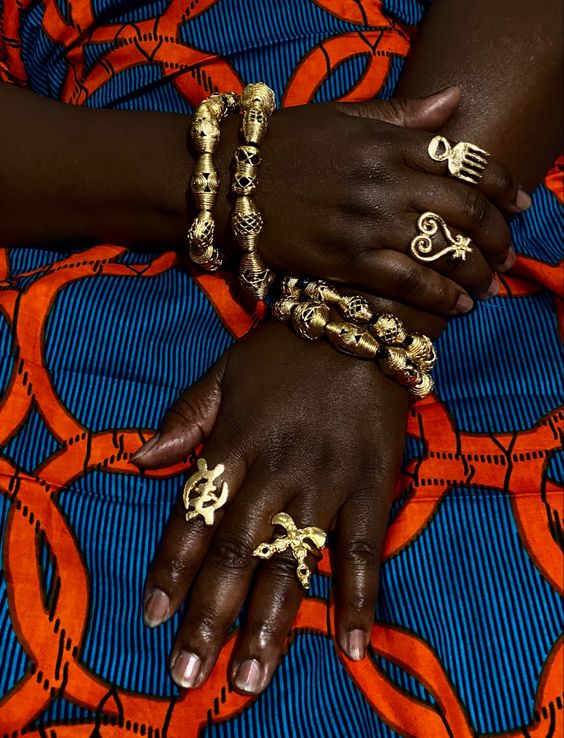
Your journey into the world of Adinkra continues to reveal not only its historical roots but also the enduring relevance and adaptability of these symbols in modern contexts.
Ntonso Adinkra Craft Village: Where Adinkra Symbols Come to Life
Ntonso, a small town near Kumasi is one of the only places in the world where the creation and use of Adinkra symbols is is still practiced and taught. The town of Ntonso is located about 20 kilometers northwest of Kumasi, the capital of the Ashanti Region. It is believed to be the birthplace of Adinkra cloth, and the town’s residents have been practicing the art for centuries.
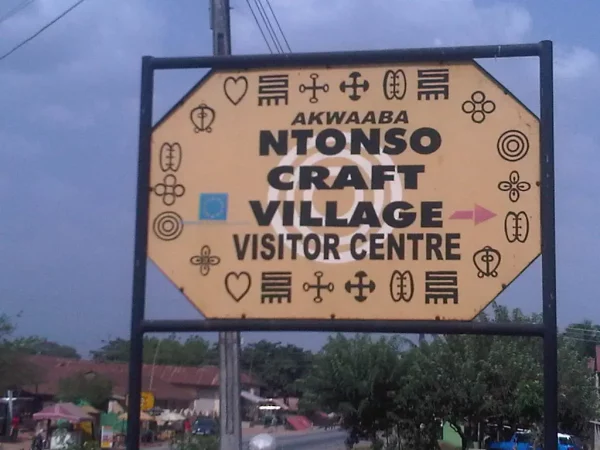
There are a number of places in Ntonso where visitors can learn about Adinkra symbols and see them being made. One popular destination is the Ntonso Adinkra Village, where visitors can watch demonstrations of how Adinkra cloth is made and learn about the meaning of the different symbols.
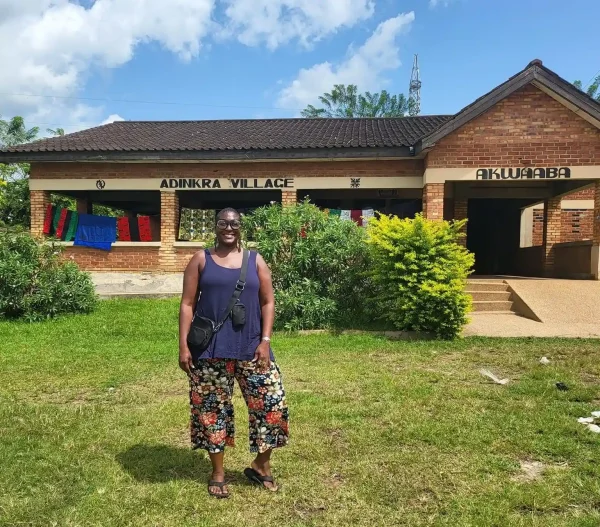
The town is known for its ability to incorporate numerous Adinkra symbols onto Kente material and even engrave these motifs on key structures like stools and royal buildings.
Craftsmen in Ntonso, such as Kente weavers, carpenters, and painters, have all meticulously mastered the skill of inserting Adinkra symbols into their works. This makes Ntonso the place to go if you need Adinkra symbols embossed on anything, particularly fabric materials like Kente.
Ntonso’s expertise in Adinkra symbols attracts visitors from all over the world. Thousands of people visit the small village each year to observe how Adinkra symbols are woven into materials such as Kente and other structures.
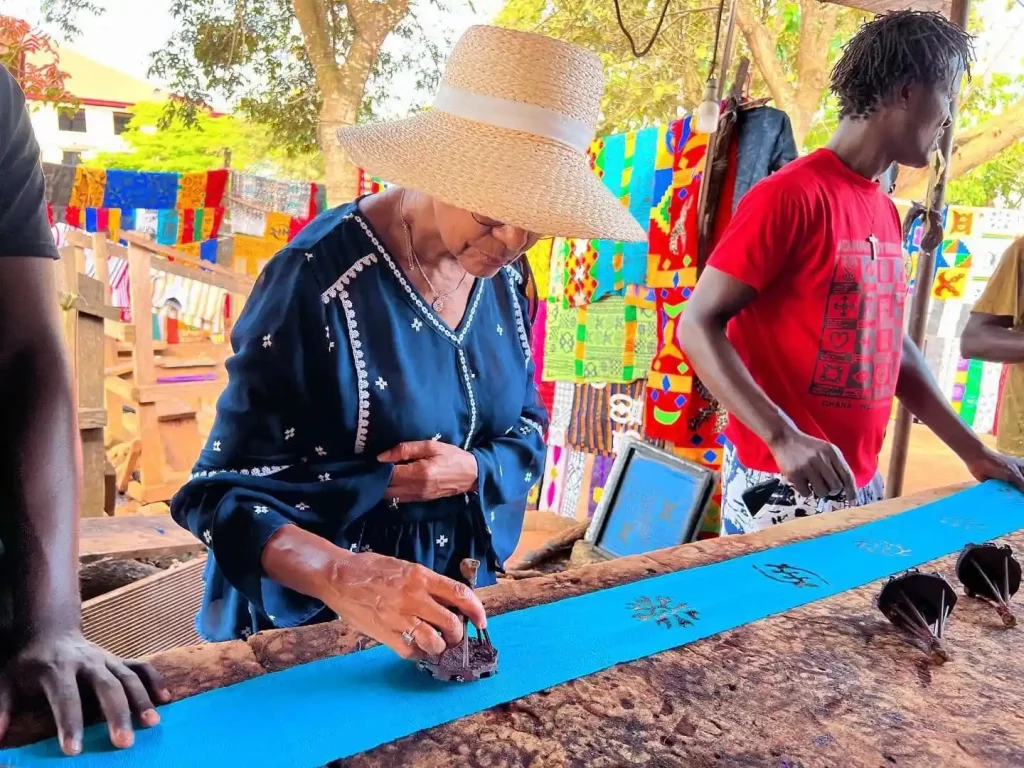
Visitors to the town learn about the history and meanings of traditional symbols including the Sankofa, Denkyem, and Duafe. They will also get the opportunity to observe the methods by which Adinkra symbols are blended into a textile material, with the primary stages being dyeing, stamping, and stitching.
Why Visit Ntonso Adinkra Craft Village?
*To see Adinkra symbols painstakingly woven into Kente cloth and other materials
*To learn about the history and meanings of traditional Adinkra symbols
*To observe the methods by which Adinkra symbols are blended into textile materials
*To purchase unique and beautiful Adinkra-inspired crafts
Conclusion
Ntonso Adinkra Craft Village is a special place where visitors can learn about and experience the rich culture and heritage of Adinkra symbols. If you are interested in Adinkra symbols, I highly recommend visiting this unique village.
